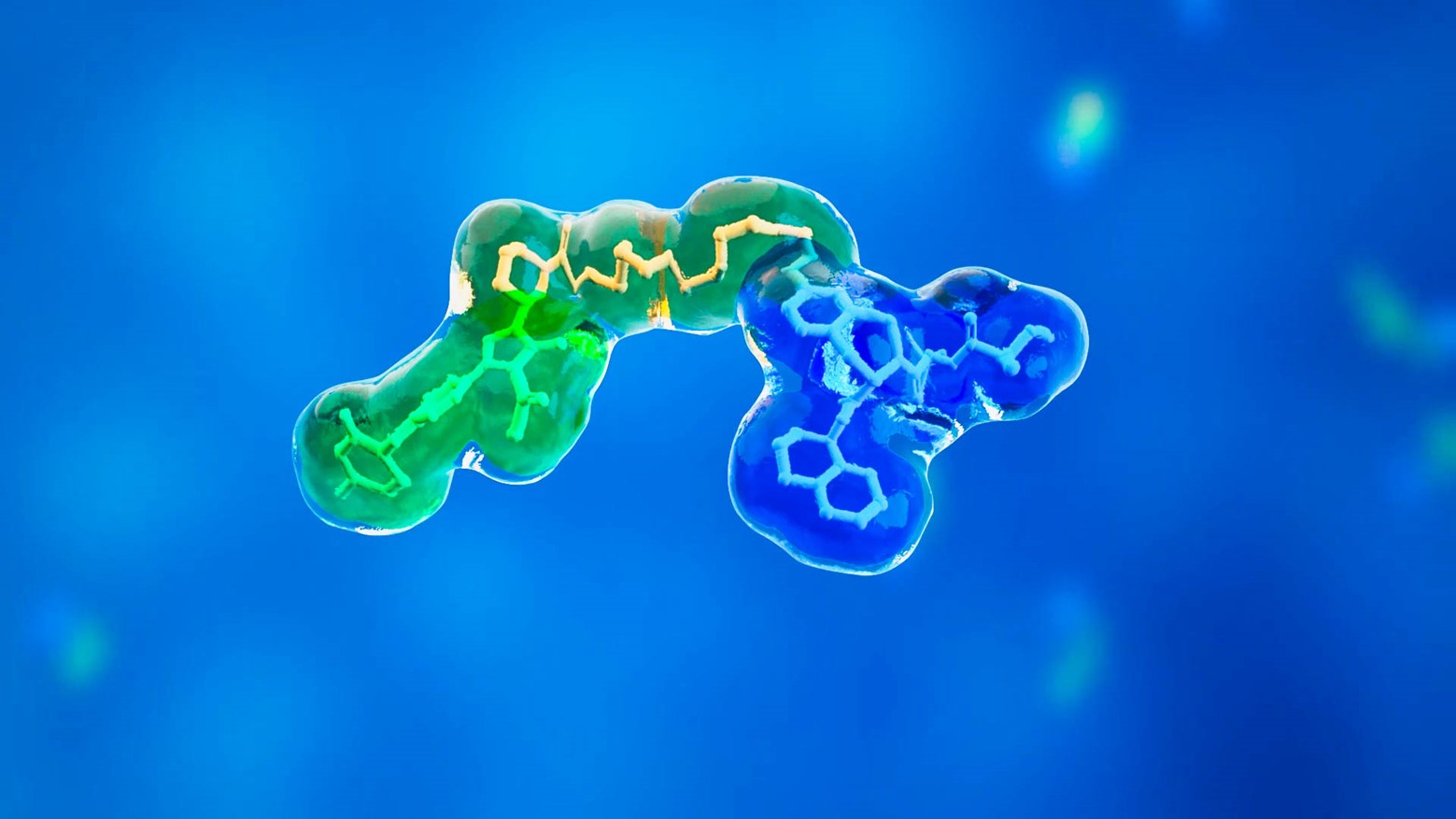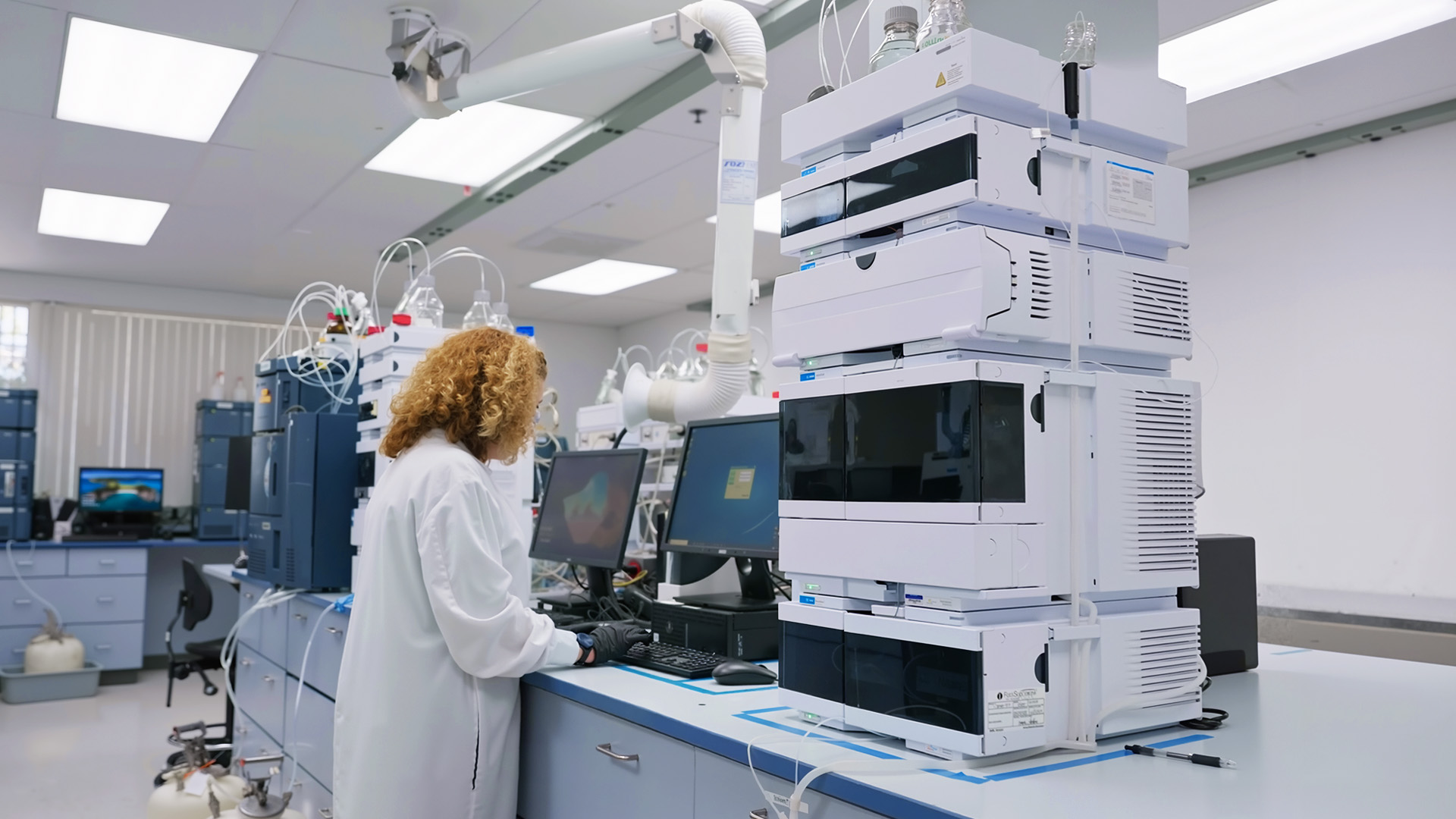WuXi Biologics
Offering End-to-End Solutions
News
STAT | The end of the undruggable: Targeted protein degradation therapies open new frontiers in cancer care
2025/07/21

The 3D-structure of PROTAC® (PROteolysis TArgeting Chimera, a type of TPD)
Targeted protein degradation (TPD) therapy is a promising new class of targeted treatments. Based on a cell’s natural mechanism for eliminating diseased proteins, this therapy can combat hard-to-treat cancers and other conditions.
The U.S. Food and Drug Administration is currently reviewing a New Drug Application for vepdegestrant, a pioneering PROTAC® (PROteolysis TArgeting Chimera, a type of TPD) molecule targeting certain breast cancer. The medication, which was developed by Arvinas in partnership with Pfizer is the first PROTAC® therapy to be submitted for regulatory review. If approved, this treatment would represent a breakthrough approach that could change the way many diseases are treated.
WuXi AppTec, a global Contract Research, Development, and Manufacturing Organization (CRDMO), is one of the most experienced enablers in this space. It has partnered with more than 150 companies on all stages in development of targeted protein degrader compounds, working with two out of every three companies developing TPD candidates.
WuXi AppTec Co-CEO Steve Yang offers his perspective on how targeted protein degraders could revolutionize treatment of cancer and other diseases and describes the role that CRDMOs play in speeding development of such drug candidates.

Steve Yang, Co-CEO of WuXi AppTec
1. From your perspective, what makes these therapies so transformative?
TPDs such as PROTAC®s are designed to break some of the major barriers of traditional small molecule drugs, thus targeting previously “undruggable” proteins.
Since PROTAC®s were developed, researchers have created several new versions of TPDs —such as AUTACs, LYTACs, and RIPTACs—that use a similar strategy. They all bring two proteins close together to produce a therapeutic effect. These new approaches are showing great promise in treating cancer, neurological diseases, and other difficult health conditions.
2. What role has WuXi AppTec played in helping to bring targeted protein degradation from concept to clinic?
WuXi AppTec supports customers from small and emerging biotechs to large pharmas in advancing their pioneering TPD projects across all stages of our CRDMO platform — from discovery to development and delivery. These comprehensive capabilities enable us to help transform promising ideas into reality with speed and quality.
WuXi AppTec has synthesized more than 188,000 complex targeted protein degrader (TPD) compounds, with more than 70 advancing to preclinical candidate (PCC) status and over 10 entering late-stage development.
3. Protein degradation therapies often face hurdles with formulation, stability, and delivery. How is your team addressing these obstacles to help make these therapies more viable for patients?
These molecules are structurally large and intricate, posing challenges in synthesis, target binding, stability, and bioavailability. Such complexity can overwhelm many biotech startups. With only a handful of scientists and limited time and funding, moving a novel degrader toward the next milestone can be daunting.
Early-stage companies are increasingly leaning on integrated CRDMOs like WuXi AppTec. The appeal is clear: rather than build infrastructure from scratch, startups can focus on science and innovation while leveraging our depth in discovery, development, and manufacturing. Such partnerships improve efficiency, speed development and controls costs, while allowing biotechs to focus on scientific innovation and maintain tight control over their IP.
4. Can you provide some examples that illustrate how this works?
Sure. One biotech partner came to us with a complex molecule that required 24 synthetic steps to manufacture. The company came to us to produce enough of that material to hit its next milestone.

A technician works in a lab at WuXi AppTec
One of our teams redesigned the synthesis process, reducing the number of steps by a third and eliminated the need to use a costly catalyst. Another team simultaneously developed a spray-dried dispersion formulation that improved bioavailability to meet the clinical requirement. That seamless collaboration allowed our manufacturing team to produce the required materials two months ahead of schedule.
Another client approached us asking if we could complete an “impossible” assignment: synthesize a complex molecule within 30 days. We mobilized a “SWAT” team of 40 chemists who worked around the clock in rotating shifts. They validated multiple rounds of scale-up in real time, streamlined the processes and delivered the needed material in just 29 days. These are a few examples of how WuXi AppTec’s integrated platform helps accelerate drug development for global innovators.
5. Effective collaboration and integration sound critical for advancing such complex projects smoothly and swiftly. It will be challenging for a startup to do that on their own.
That’s right. In a space defined by long timelines and bold science, translation is everything. From idea to impact, it takes more than science — it takes collaboration, speed, and scale. That’s what we’re here to deliver.
Click here to read the original news.

